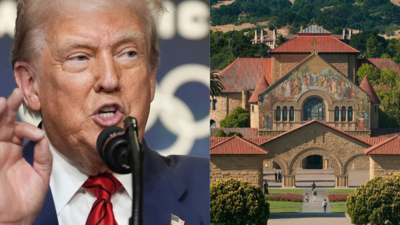Stanford University is shutting down its Office for Inclusion, Belonging and Intergroup Communication (IBIC), dismantling what was once touted as a flagship effort to build diversity and campus harmony. The closure, confirmed in internal announcements and reported by The Stanford Daily, is part of a sweeping cost-cutting plan that will also see 363 staff members laid off this fall.The move is tied to a staggering $140 million budget shortfall, fuelled largely by federal funding cuts under the Trump administration’s latest spending bill.But at Stanford, a university with a $36 billion endowment, as mentioned by Stanford Daily, the decision has resonated as something far more symbolic, a deliberate reordering of values, where identity work and community-building give way to national research imperatives and ideological retrenchment.
Why it happened: The new political economy of higher education
The financial catalyst behind the closure cannot be separated from its ideological context. In recent years, DEI initiatives have become focal points in the broader cultural and political backlash against what opponents label as “woke ideology.” The Trump administration’s second term has accelerated this trend, not only by cutting funding, but by framing DEI work as incompatible with academic neutrality and institutional efficiency.Stanford, unlike some peer institutions that are reportedly engaging in quiet negotiations with the federal government to secure exemptions or alternative funding streams, appears to be taking a more definitive approach: complying with the political climate by eliminating programmes that might risk federal scrutiny or financial penalty.This shift also coincides with a broader movement in higher education. Since the US Supreme Court’s 2023 decision to strike down affirmative action in college admissions (Students for Fair Admissions v. Harvard), DEI offices have increasingly come under pressure — legally, politically, and economically.Stanford’s decision is part of a growing national pattern, one that’s not just financial, but deeply ideological. The Trump administration’s “One, Big, Beautiful Bill,” passed earlier this year, sharply increased the endowment tax rate from 1.4% to 21% for private universities with assets exceeding $5 billion, such as Stanford, Harvard, and Yale. The bill also slashed federal funding for Title VI and Title IX enforcement and rechanneled research grants away from social sciences and DEI-aligned programmes toward defence, artificial intelligence, and quantum computing.In effect, the federal government is engineering a paradigm shift in what, and who, American universities are funded to serve.Stanford, reportedly unwilling to enter into quiet negotiations with the White House (unlike other elite institutions), has begun making cuts across the board. DEI offices, often perceived as politically sensitive and financially peripheral, are proving to be the first casualties.
Campus DEI efforts diminish as federal scrutiny intensifies
Stanford is not alone. According to US media reports, at least 17 major universities have downsized or eliminated DEI offices since the Supreme Court struck down race-conscious admissions in Students for Fair Admissions v. Harvard.The Chronicle of Higher Education reported a 42% year-over-year drop in DEI-related job postings between 2023 and 2024. Meanwhile, Republican-led legislatures in Florida, Texas, and Utah have outlawed mandatory DEI trainings and begun auditing university expenditures on identity-focused programming.Even at institutions with strong liberal traditions, DEI offices have become politically fraught — seen by critics as ideological echo chambers more concerned with linguistic policing than meaningful inclusion.
What it means for US campuses
The closure of IBIC, and similar developments nationwide, marks a broader transformation in the mission and structure of American universities. Where once DEI was embedded as a moral and institutional imperative, it is now increasingly framed as ancillary — valuable, perhaps, but not essential.This repositioning raises uncomfortable questions: Is inclusion still a core value, or now a dispensable ideal? What happens to underrepresented students when formal spaces for identity exploration and community dialogue are eliminated? Will universities compensate for these losses through informal means, or is the era of DEI as a campus mainstay coming to an end?At elite institutions, where prestige is tightly interwoven with federal partnerships and research output, the answers are becoming clearer. Belonging is being subordinated to bottom lines.Bottom lineIn its founding motto, Stanford proclaims: Die Luft der Freiheit weht, “The wind of freedom blows.” But today, the gusts blowing through the university’s archways feel less like liberation and more like austerity.What’s unfolding is not simply the erosion of a single office, but a broader realignment of institutional priorities, one that privileges STEM over community, research over reflection, and federal favor over student voice.As elite campuses across the US recalibrate in the face of political pressure and financial constraints, Stanford’s actions will be closely watched, not as an aberration, but as a harbinger of a new chapter in American higher education.






